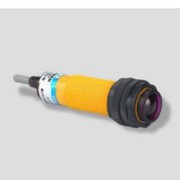What Is A Pendant Control Station
May 20, 2024
A pendant control station (also known as a pendant control station or pendant control station) is a specially designed control panel or operator station that is usually suspended from a wall, ceiling, or any convenient location. This design is useful in applications that require space savings, ease of operation, or adaptation to specific environments.
Key features of pendant control stations include:
Space saving: Since the control station is suspended in the air, it does not need to occupy space on the ground or on the workbench, which is especially suitable for environments with limited space.
Easy to operate: The suspended control station can be flexibly adjusted according to the operator's height and habits, placing it in the best operating position to improve operating efficiency and comfort.
Easy to install and maintain: Most pendant control stations are designed with quick installation and removal mechanisms for easy installation and maintenance. At the same time, they also usually adopt a modular design to facilitate the replacement and repair of components.
Strong adaptability: The suspended control station can adapt to various working environments, including high temperature, high humidity, dusty and other harsh environments. They typically feature higher-grade housings and sealing designs to ensure the safety and reliability of internal components.
High safety: Suspended control stations are usually equipped with emergency stop buttons, protective covers and other safety devices to ensure that the power supply can be quickly cut off or to prevent misoperation in an emergency.
Suspended control stations are widely used in various industrial fields, such as machinery manufacturing, chemical industry, electric power, logistics, etc. They are often used for tasks such as controlling machinery and equipment, monitoring production processes, adjusting process parameters, etc. By using suspended control stations, companies can increase production efficiency, reduce production costs, improve the working environment, and enhance the flexibility and scalability of the production line.







